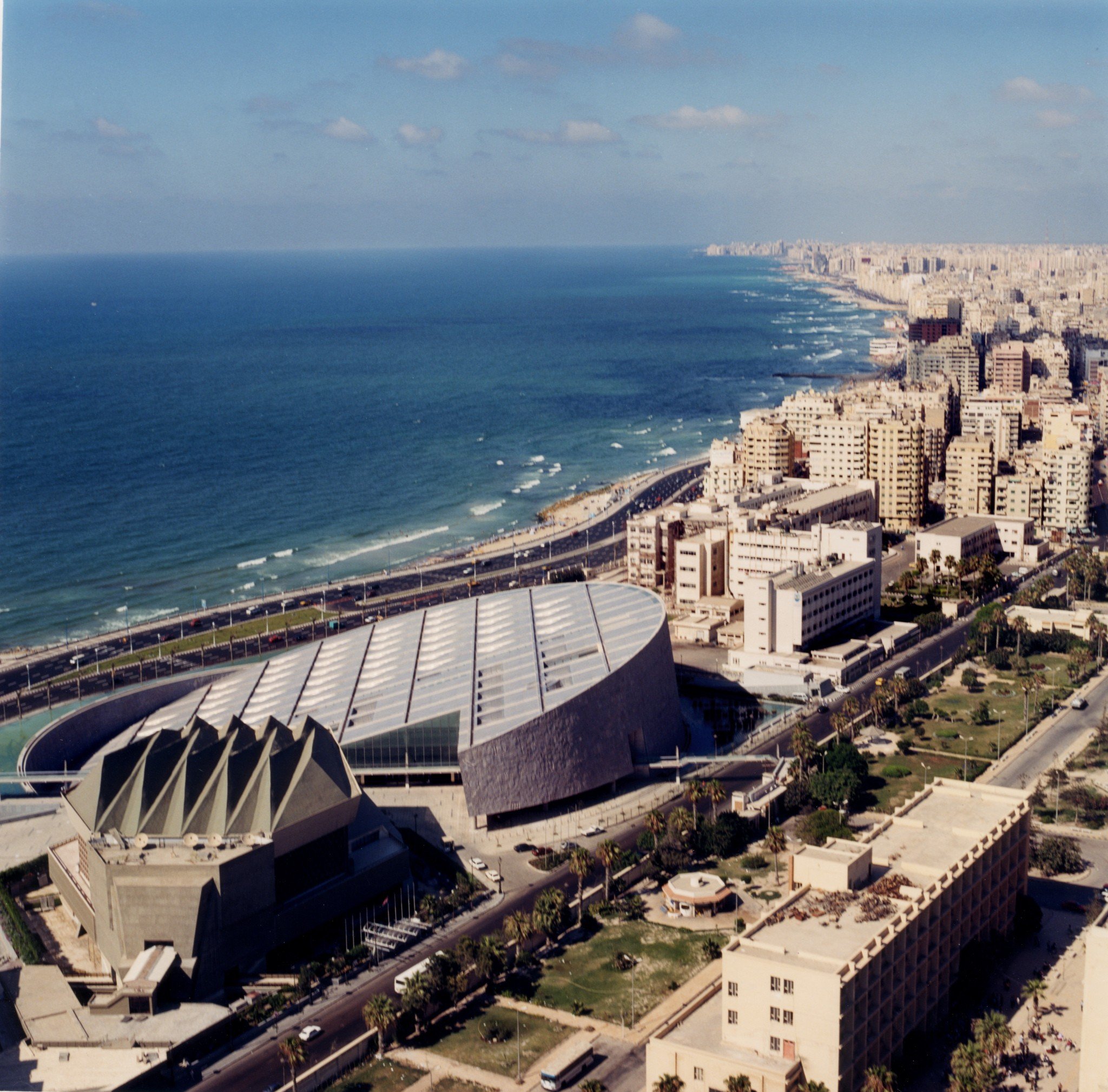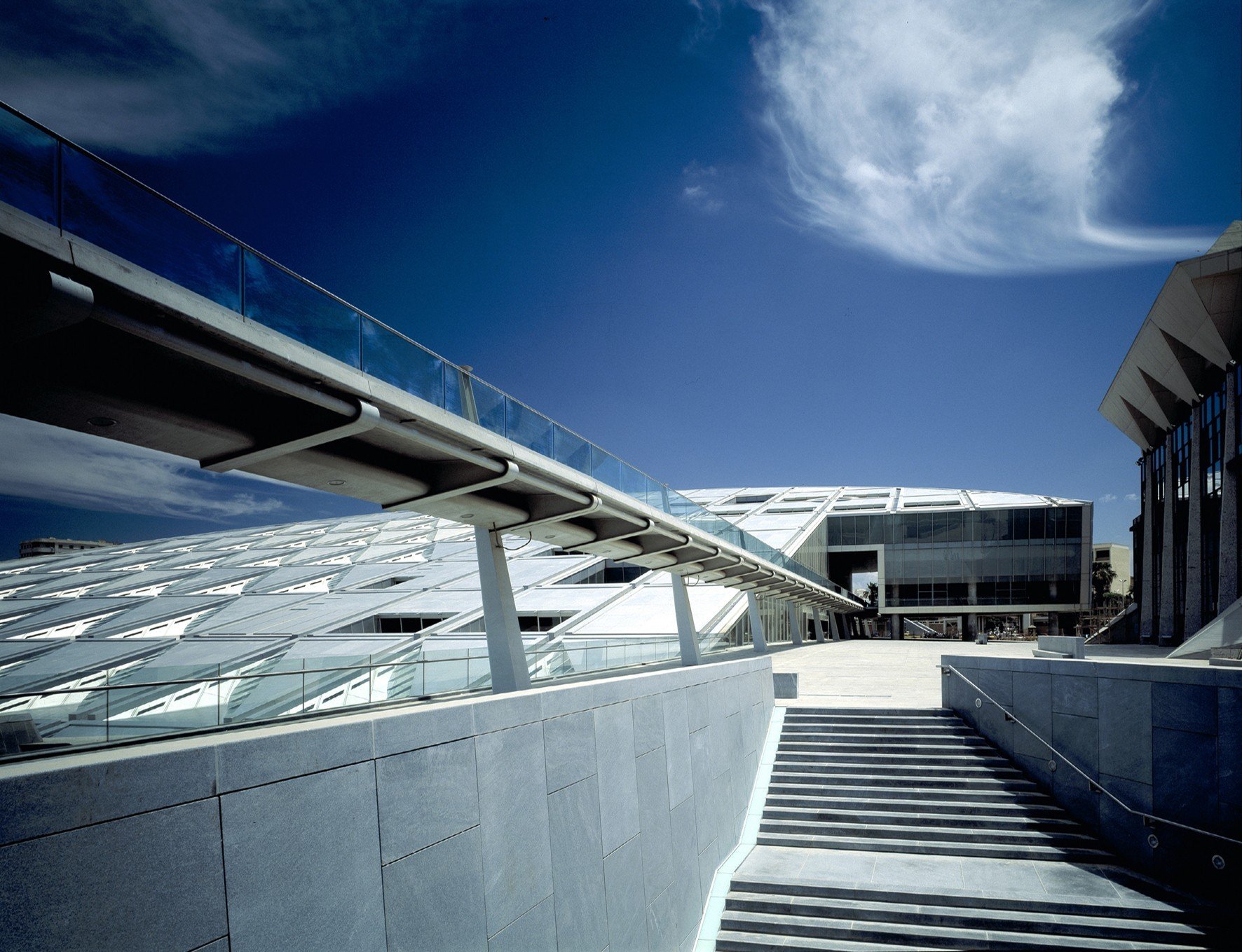Billboard Library
January 2016 - May 2016
Semester Project of Various Media & Sizes (Cornell University)
Individual Project (Professor Leslie Lok)
Located on a prominent site along the East River, against the backdrop of rapid urban change, the Billboard Library at Hunter’s Point stands as a public building bringing community devoted reading, working and leisure space to the Long Island City waterfront. Resisting recent trends of replacing bookshelves with generic coworking spaces, the City Library stands proudly as a coexistence of the digital and analogue, both a stage and a backdrop: a temple of books and screens that can be used for movies, lectures, and digital art for its visitors and for people walking along the waterfront.
The design questions the role of signage in relationship to the library as an agent for public knowledge dissemination. The atmosphere of the spaces responds to the changing contents of its displays: the natural and artificial lights animate the space, creating a visual layering of contrasting plots, in turn, thickening the narratives of the visitor’s reading. The transparency across and between levels provides visitors multiple overlapping views across interiors spaces and outwards to the natural surroundings. A slow, oversized hydraulic elevator serves as the building entrance, as a well as a moving threshold that provides both enclosure, program and circulation. It is a dramatic and flamboyant stage to see and be seen. The Billboard Library is a critical intersection of knowledge, signage and information.

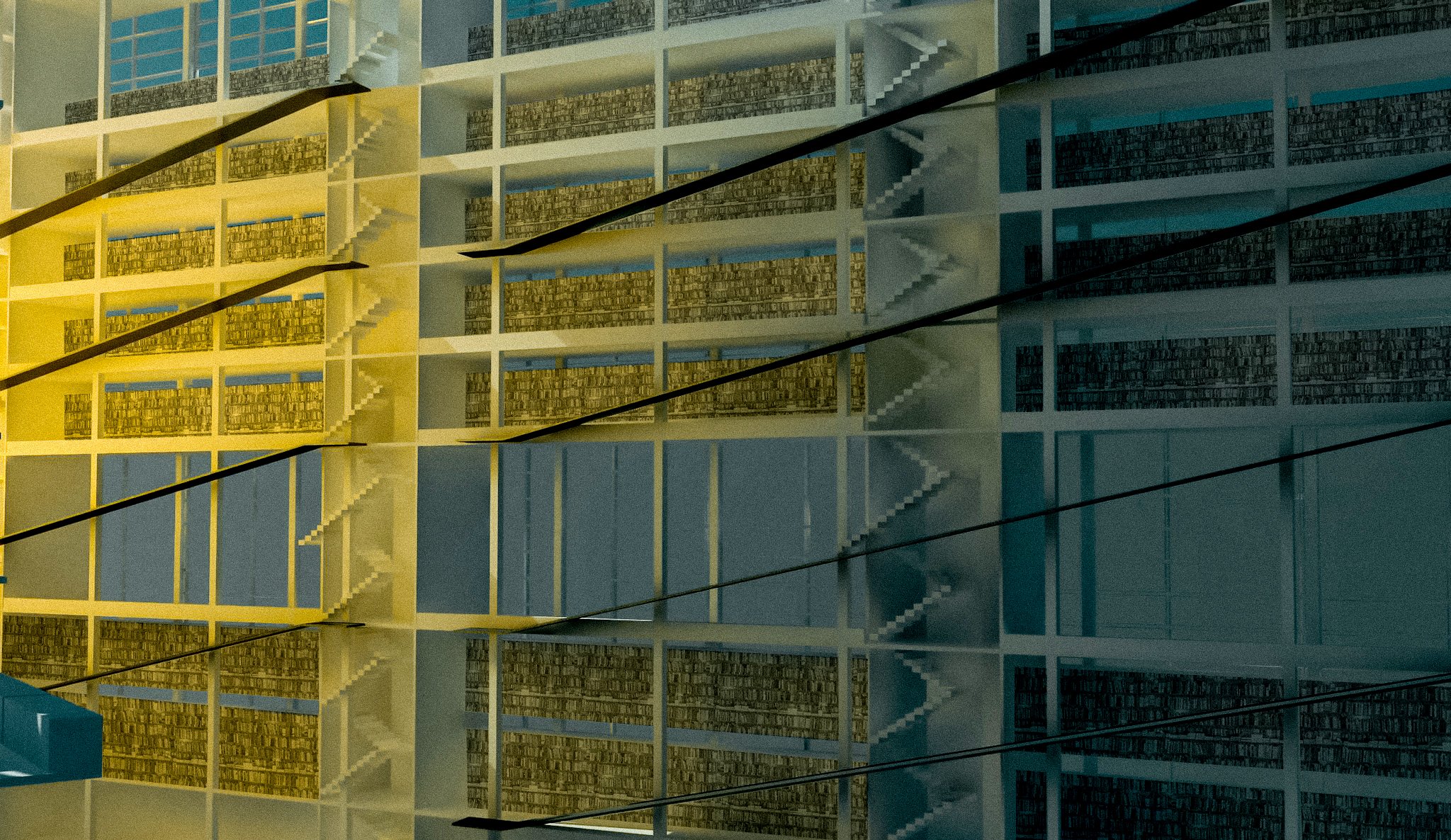

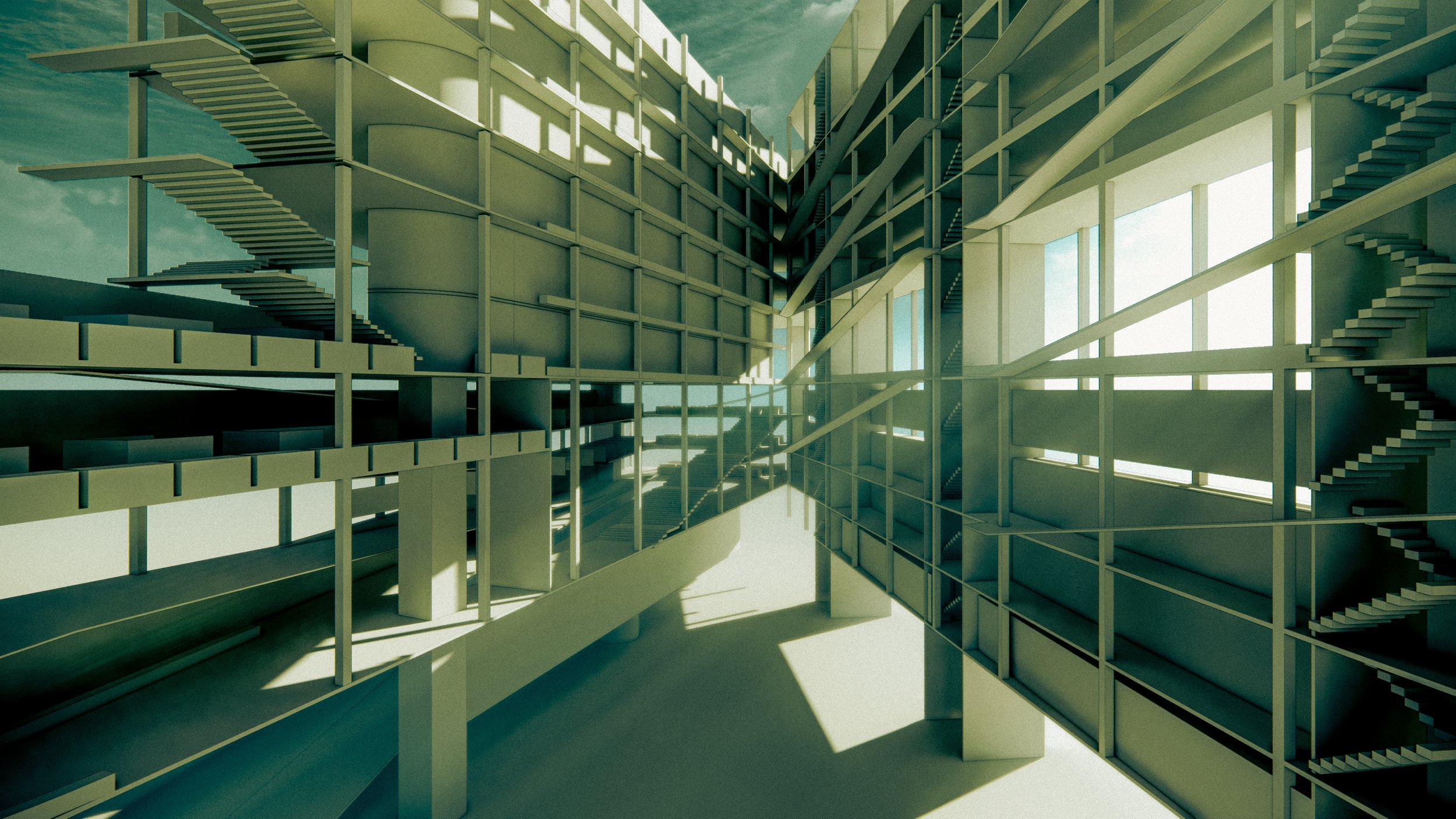


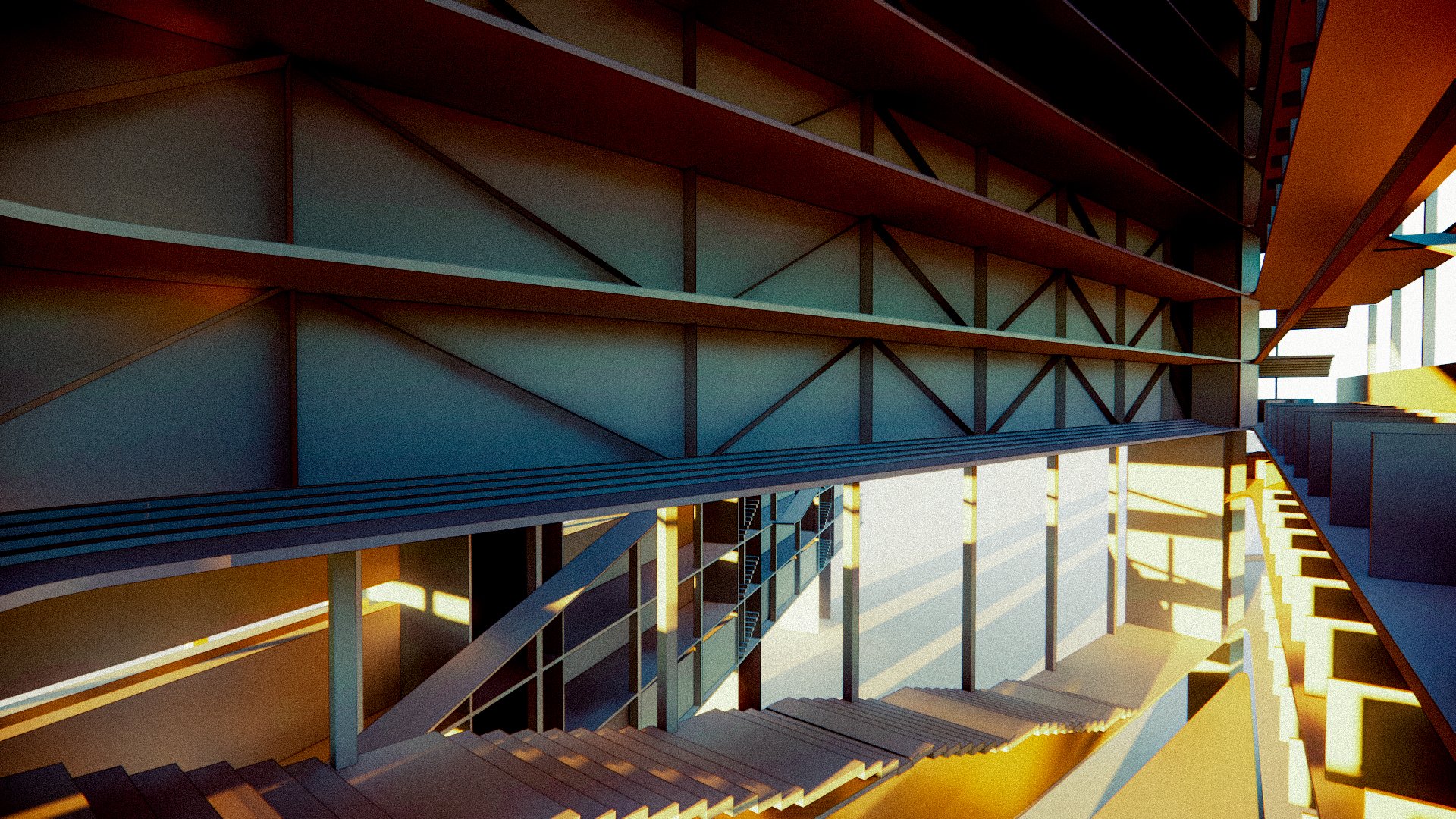


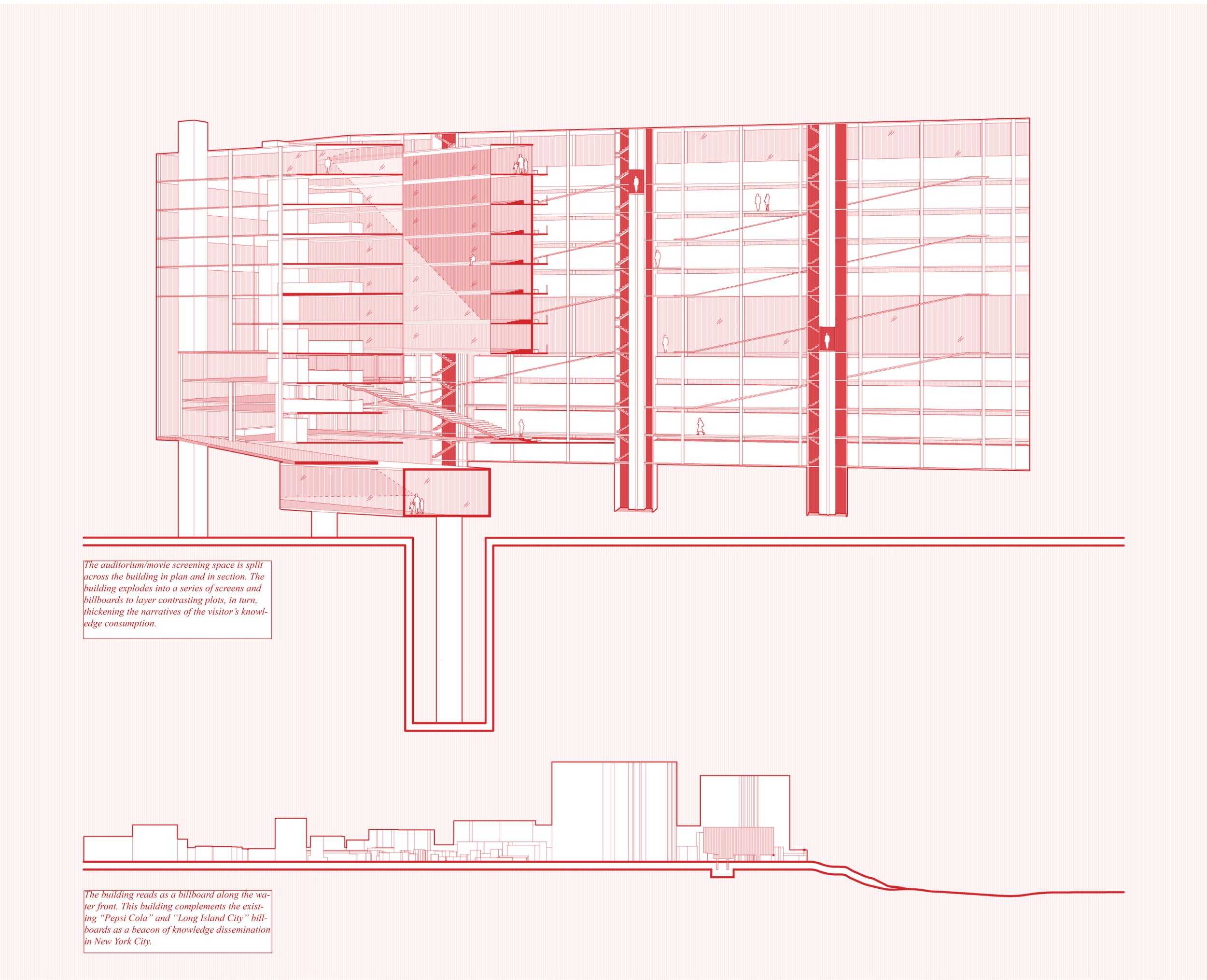
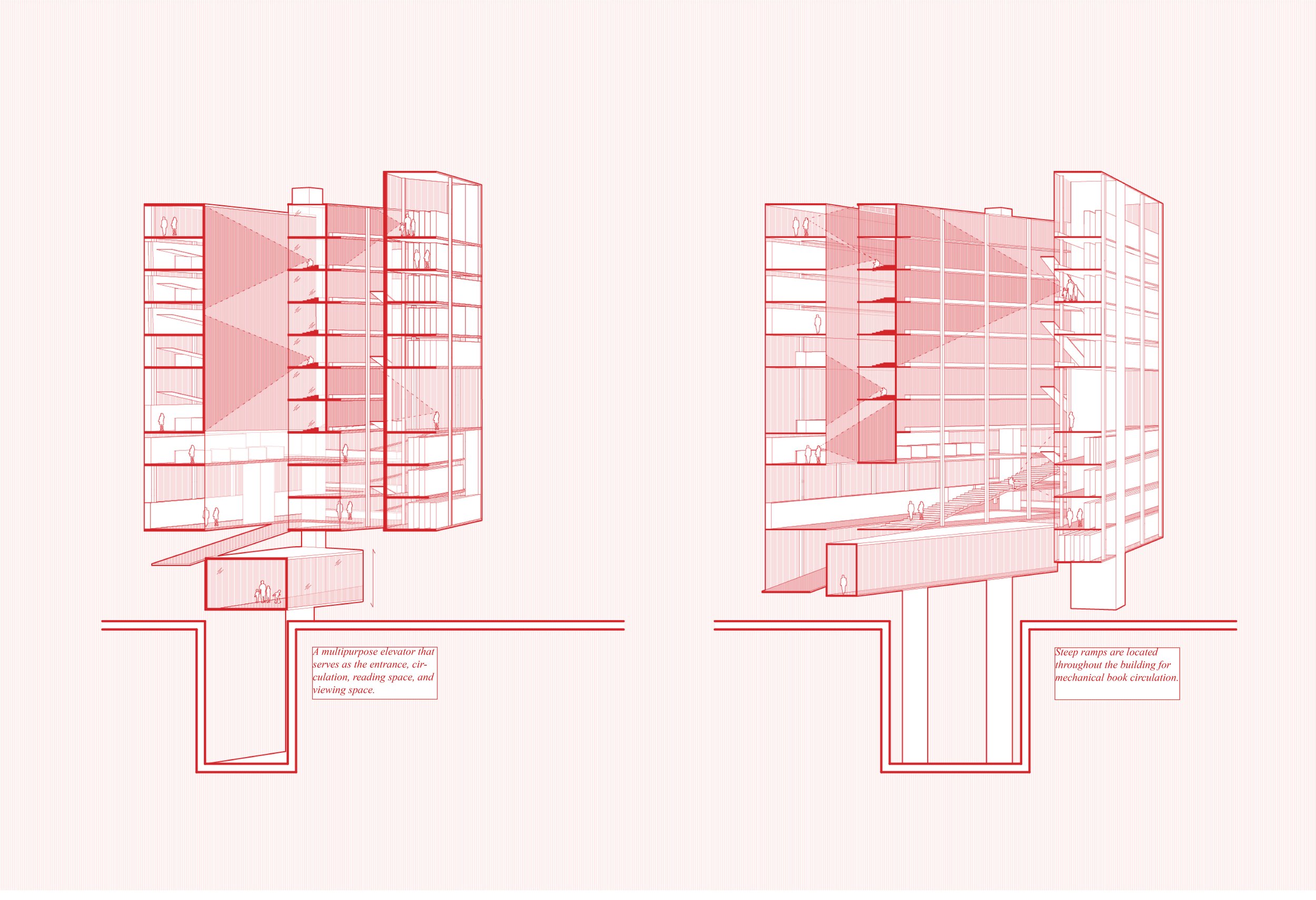
Inspiration
Charcoal drawing (30 cm x 42 cm)
I climbed into a roadside billboard in Upstate New York late at night. It was chilly and it was about to rain. The space felt like a charged ruin: the up lights were not working, the space was lit by moonlight. The billboard’s structure is composed of layers of interlocking steel that soar into the sky, its existence for the sole purpose of framing a piece of vinyl for thousands of people to see when driving by. The subtle luminous quality of the vinyl, the exposed outriggers, torsion bars and stringers create a visual hierarchy necessitated by material and structural efficiency.






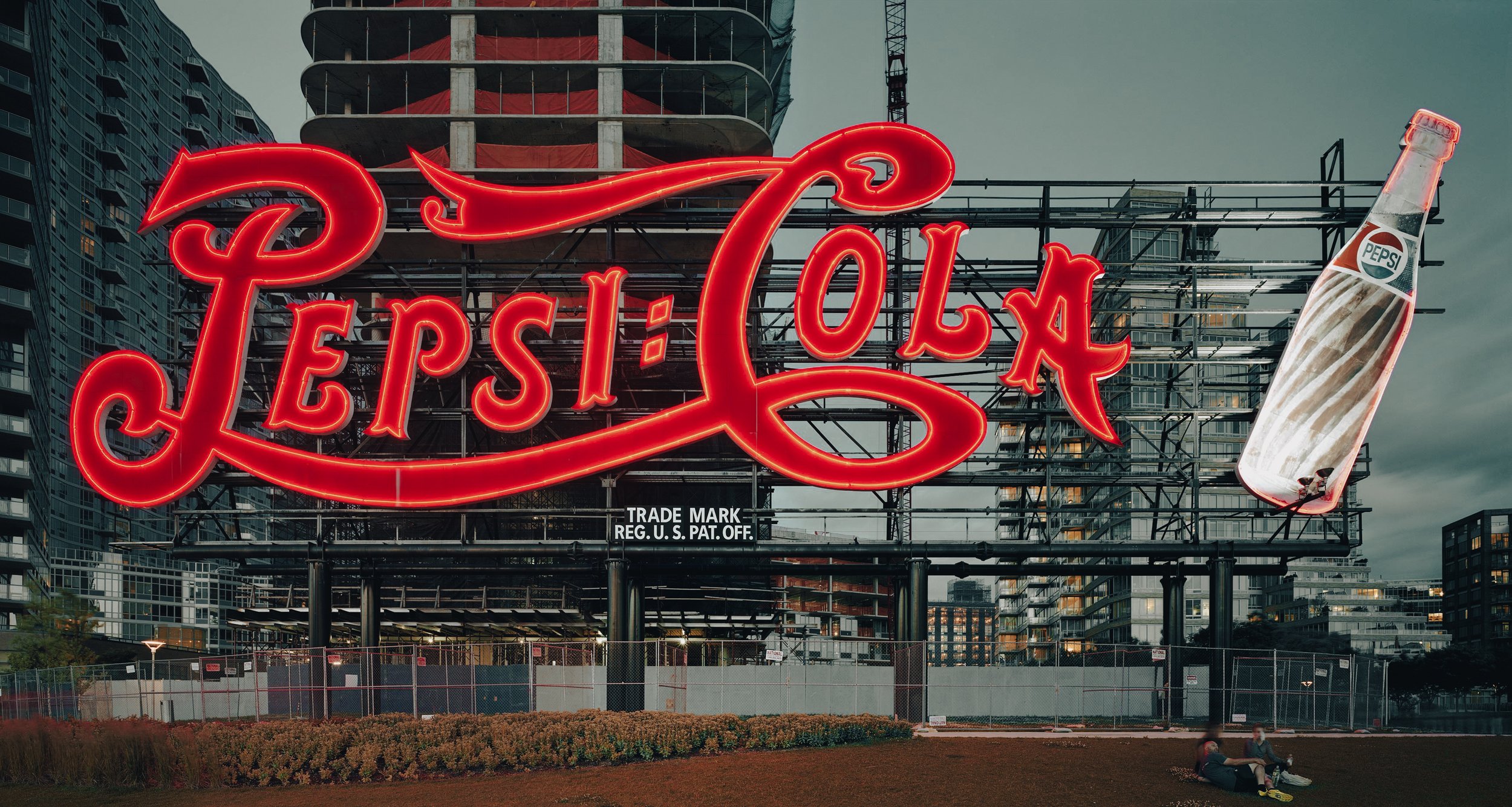
Process
I surveyed some of the billboards in Times Square, New York. I found the structure most interesting when the building is the billboard and thus, the billboard is the building. The messages projected out to the audience can be completely different from the function and program of the billboard’s host building. The billboard has a parasitic relationship with its host and it acts as a buffer and filter between the building and the rest of the city.
Iteration 1: Maintain the form of a flat billboard, add an entrance block and place the program into the intervention. Iteration 2: Maintain the form of a flat billboard, and create blocks of the program at the back of the billboard. Cutouts are made on the billboard to create views and vistas for the occupants. Iteration 3: I followed the formal language of three-prong billboards. The space between the screens created a volume of space, structure, and stability. The program could be wedged between the 2-3 screens. I responded to the project brief by creating a standalone building on the project site. There are two main types of billboards, flat screen (two surfaces) and triangular wedges (three surfaces). I tried thickening the existing billboard typologies and impregnating them with the program. By condensing the program into slim volumes, the design frees up the rest of the waterfront for a public park. The design simultaneously acts as a filter and buffer to the rest of the city.
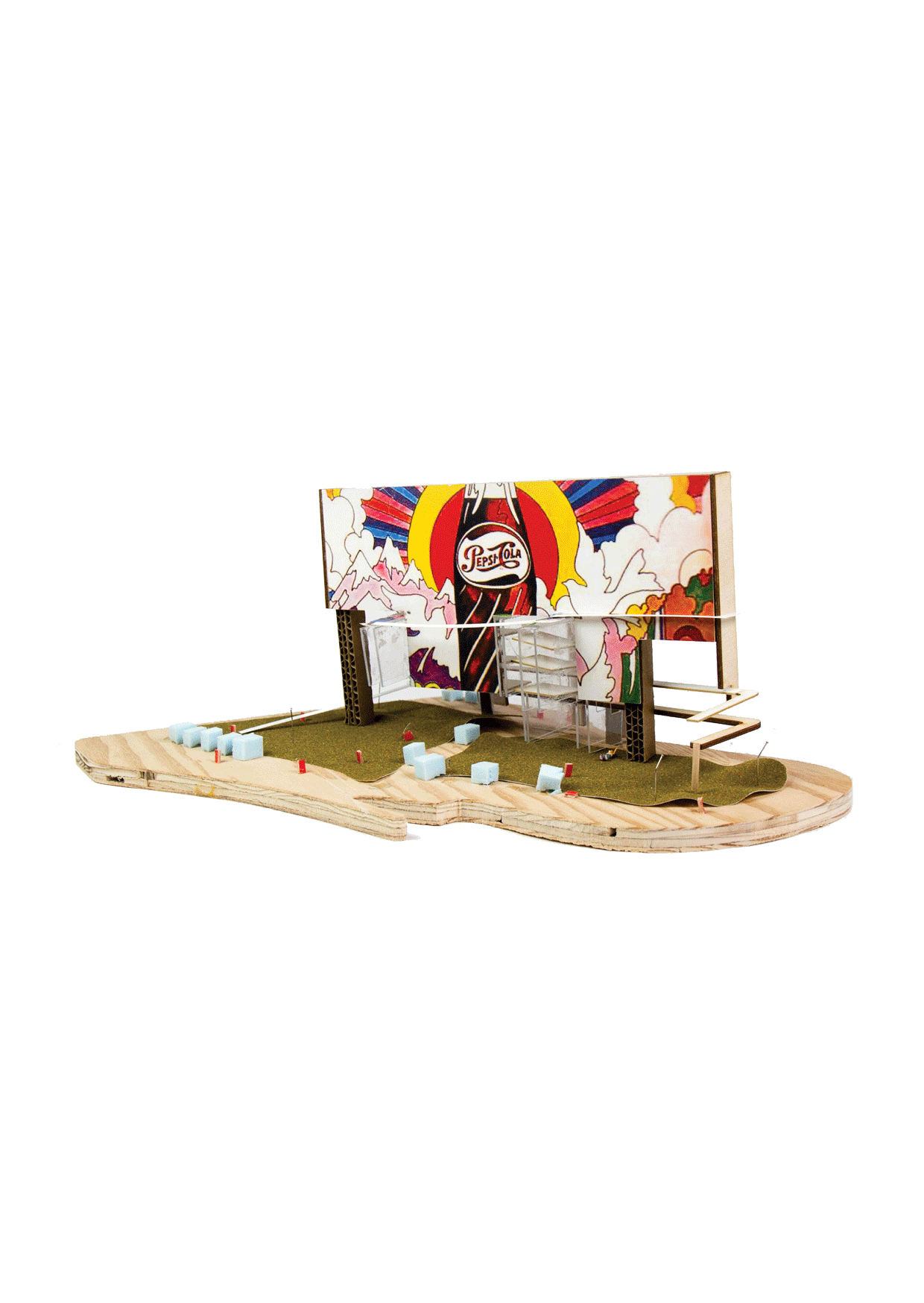

Precedent Analysis of the Alexandrina Library (Snøhetta)
Digital drawing (262 cm x 370 cm)
This was a precedent analysis and interpretive drawing of Snøhetta’s Alexandrina Library. I focused on the library’s service circulation. The ramps and stairs that wrap the periphery are pivotal to the library’s means of operation. Libraries have evolved to serve as multipurpose gathering spaces for a myriad of functions. Historically, the library was much like today’s data centers - a vast storage facility. Today, libraries serve as flexible community spaces, the new library represents democratic spaces. This precedent analysis informed the design direction of this project and shaped my thoughts about knowledge dissemination, and the typology of the library.


